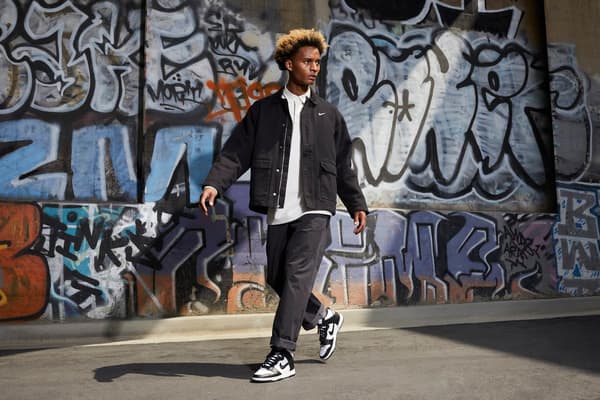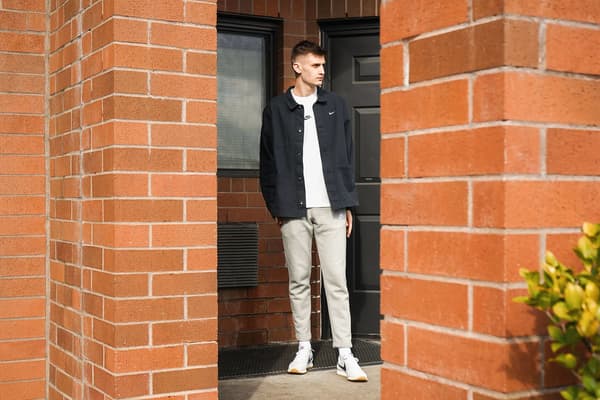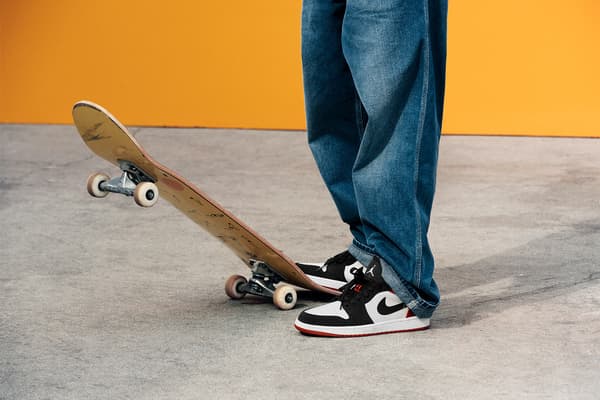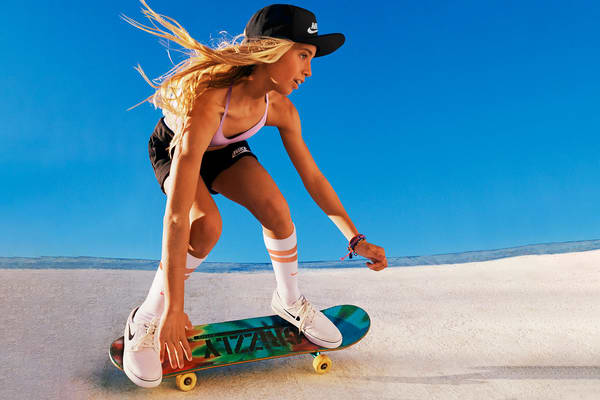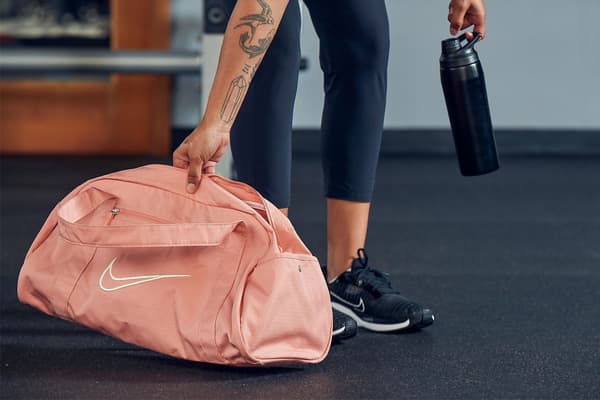What Is Pilates—And What Should You Wear for It?
Styling Tips
This mind-body exercise offers both physiological and therapeutic benefits—and choosing the right wardrobe is key to an effective workout.

Pilates is more than just a trendy workout. It can also help you feel empowered and even improve your overall health. And knowing what to wear during the practice can optimise the experience—mentally and physically. But first, let's unpack what Pilates is and the benefits it can provide.
"At its root, Pilates is a method of physical movement that is designed to stretch, strengthen and balance the body", says Jessica Schatz, certified master Pilates instructor and integrative wellness coach.
She explains that when people hear the word Pilates, they tend to think of core strength, but that's not actually the end goal.
"It's about using the core strength to build and develop functional and sustainable movement patterns throughout the body. Since the core is the centre from which all movement stems, Pilates helps you move and breathe better through your daily activities with more freedom, more power and less pain", says Schatz.
Balance is an essential factor in this low-impact exercise because it relies on the breath to coordinate movement. "As the workout creates optimal strength through the muscles balancing and fine-tuning neuromuscular patterns, it's also balancing the mind and body, ultimately transforming the way your body functions, feels and looks—but I call the 'looks' a bonus feature", she adds.
While Pilates and yoga share a number of similarities—including strengthening the muscles, improving flexibility and enhancing the mind-body connection—Schatz explains that the principles of each differ.
Don't miss: Five Simple Ways to Create a Relaxing At-Home Yoga Space
The original six guiding principles in Pilates are:
- Centring
- Concentration
- Control
- Precision
- Breath
- Flow
"In very simple terms, yoga has more freedom where Pilates is very controlled", she says. "Yoga offers spiritual well-being, but in Pilates, there's a balancing of the body with the core strength. And yoga is an ancient practice that's been around for thousands of years. The Pilates technique was created in the early 20th century by a mechanical anatomist named Joseph Pilates."
Before we dive into everything you need to know about what to wear to a Pilates class, let's review some of the top research-backed health benefits of engaging in the exercise regularly.
6 Potential Benefits of Pilates
1.It's Accessible to Most Fitness Levels
"Regardless of gender, age, race, fitness level, whether you're a weekend warrior or professional athlete, antenatal or postnatal, or if you're living with arthritis or Parkinson's disease, it's good for everybody", says Schatz.
Other benefits include helping to improve posture, circulation, joint health, balance and control and even bone health.
2.Promotes Bone Health
Regular Pilates workouts were shown to effectively increase bone-mineral density in post-menopausal women, according to a study published in the Journal for Back and Musculoskeletal Rehabilitation. Improving as well as maintaining bone mass and bone-mineral density can result in fewer fractures, reduced risk of osteoporosis and lower pain levels. The women in the study were also shown to have enhanced physical abilities, along with better quality of life compared with the women who were in the non-Pilates group.
3.Supports Healthy Brain Function
Results from a randomised clinical trial conducted in Spain indicate that Pilates may improve both cognitive and functional abilities. Preserving cognitive health is essential in order to think clearly, learn new tasks and maintain memories, along with helping to reduce the risk of Alzheimer's.
4.Enhances Athletic Performance
Pilates can increase muscle mass, hamstring-to-quadriceps ratio, and trunk and shoulder strength, which suggest it may help athletes perform better, as well as prevent injuries, according to a study published in the Journal of Exercise Rehabilitation.
5.Helps to Reduce Overall Pain
Research published in PLOS ONE revealed that Pilates can offer greater improvements in pain and functional ability than other forms of physical activity. In this particular study, which reviewed 14 randomised control trials, adults with chronic lower back pain experienced better results in the short term (between four and 15 weeks). Pilates was also shown to offer similar levels of lower back pain improvement as massage therapy.
6.May Boost Overall Well-Being
According to a review published in the journal Frontiers in Neurology, Pilates was found to have moderate to large effects on several psychological health parameters, such as quality of life, depression, sleep quality, fear of falling and pain perception.
What to Wear to Pilates
"Comfort and flexibility are the most important factors in your Pilates wardrobe", emphasises Schatz. Her main tip is to opt for form-fitting outfits versus baggy ones.
"Loose clothing is not only more difficult to move in, but it prevents the instructor from learning your form, figuring out which areas need to be worked harder and if the body is in alignment", she explains.
RELATED: Choosing Clothing for Hot Yoga: Tips to Stay Cool and Comfortable
Here, Schatz breaks down a few suggestions on what to wear to a Pilates class—on top, bottom and on your feet.
1.Tops and T-Shirts
- Choose form-fitting, breathable tops.
- Sleeveless is the best choice. If you pick a top with sleeves, make sure the sleeve is form-fitting. "This is especially important if you're using equipment because you don't want the clothes to catch on the springs or the hooks".
- Stay away from tops with ties at the back. "We do a lot of lying on our back and rolling on our spine, so a tie-back top will inhibit your spine and prevent you from getting in the proper position. Trust me, it will be uncomfortable."
Consider these Nike finds: Nike Fast Women's Tie-Dye Training Tank; Nike Sportswear Women's T-Shirt; Nike Dri-FIT One Luxe Women's Slim-Fit Tank; Nike Dri-FIT Legend Men's Training T-Shirt; Nike Pro Warm Men's Long-Sleeve Top; Nike Pro Dri-FIT Men's Tank.
- Choose form-fitting, breathable tops.
2.Trousers
- Choose form-fitting, breathable bottoms. "This includes ankle-length leggings, capris, tights and running trousers".
- If you go with shorts, pick form-fitting ones. "You can wear loose shorts over cycling shorts if you like".
- Avoid bottoms with a drawstring, belt and tassels, as well as a zip at the back. "Anything that hangs off the clothes can get caught on equipment, which is dangerous", says Schatz. "And a zip at the back of your trousers can annoy the vertebrae".
Consider these Nike finds: Nike Sportswear Essential Women's High-Waisted Leggings (Plus Size); Nike Yoga Luxe Dri-FIT Women's 7/8 Matt Jumpsuit; Nike Yoga Luxe Women's Shorts; Nike Phenom Elite Men's Running Tights; Nike Yoga Dri-FIT Men's Trousers; Nike Pro Dri-FIT Flex Rep Men's Shorts.
- Choose form-fitting, breathable bottoms. "This includes ankle-length leggings, capris, tights and running trousers".
3.Shoes
Spoiler alert: none are required for this exercise.
"Kinetic energy starts from the ground up, and wearing sneakers will restrict some of the movements", says Schatz. "Barefoot activities like Pilates can be more beneficial for balance and posture, as well as help prevent injuries such as shin splints and plantar fasciitis".
Story written by Amy Capetta
